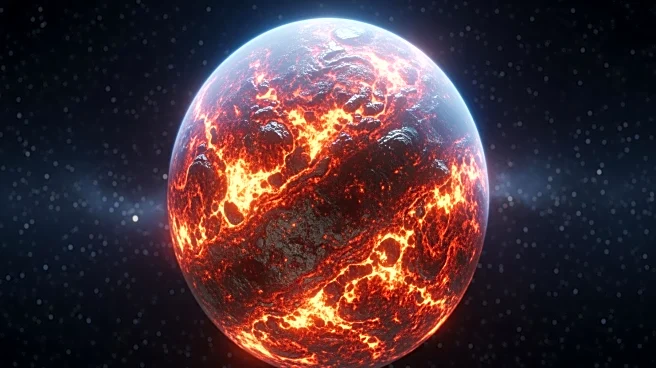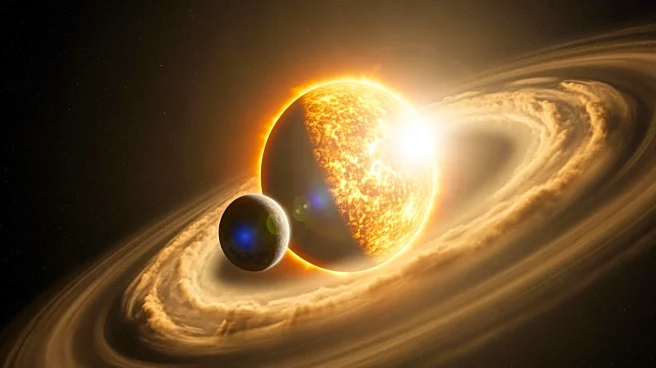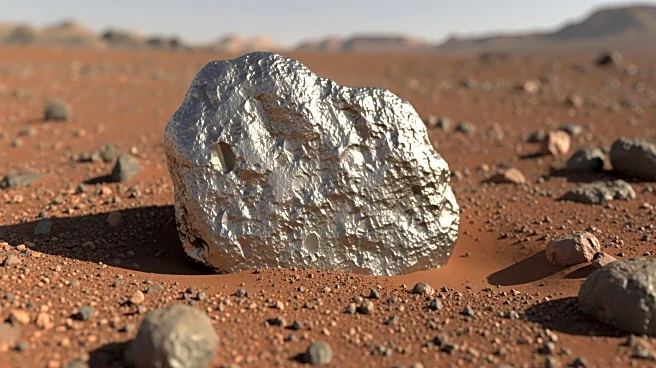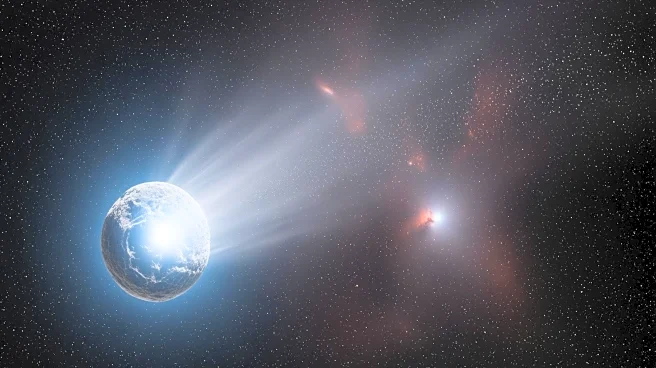What's Happening?
A recent study published in Science has reconstructed the chemical composition of Theia, the ancient planetary body believed to have collided with early Earth, leading to the formation of the Moon. Researchers
from the Max Planck Institute for Solar System Research and the University of Chicago analyzed lunar samples returned by the Apollo missions, focusing on iron isotope ratios to trace Theia's origins. The study suggests Theia originated in the inner Solar System, possibly forming closer to the Sun than Earth. The collision, which occurred about 4.5 billion years ago, significantly altered Earth's size, structure, and orbit, ultimately resulting in the Moon's creation. The research involved measuring isotopic ratios in Earth and Moon rocks, revealing identical signatures that help reconstruct Theia's likely composition and formation region.
Why It's Important?
Understanding Theia's composition and origin provides crucial insights into the early Solar System's dynamics and the processes that led to the Moon's formation. This knowledge enhances our comprehension of planetary formation and the conditions that existed in the inner Solar System. The study's findings could influence future research on planetary collisions and their role in shaping celestial bodies. By identifying Theia's birthplace, scientists can better understand the distribution of materials in the early Solar System, which has implications for the study of other planetary bodies and their formation histories.
What's Next?
Further research may focus on refining models of planetary collisions to better understand the sequence of events that led to the Moon's formation. Scientists might explore other isotopic signatures to gain deeper insights into Theia's composition and the materials present in the early Solar System. Additionally, the study could prompt new investigations into the formation of other moons and planetary bodies, using similar isotopic analysis techniques to trace their origins and development.
Beyond the Headlines
The study raises questions about the nature of planetary formation and the role of collisions in shaping celestial bodies. It highlights the importance of isotopic analysis in reconstructing the history of planetary bodies, offering a method to explore the origins of other planets and moons. The research also underscores the interconnectedness of celestial events, as the collision between Theia and Earth not only formed the Moon but also influenced Earth's development and its ability to support life.











